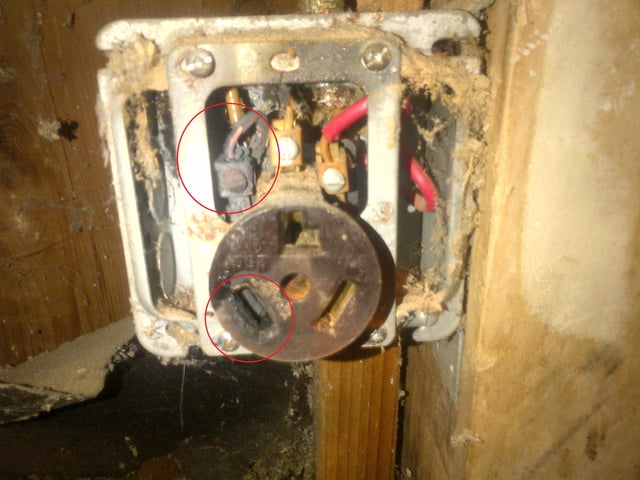This afternoon, my wife and I noticed a peculiar smell coming from the garage. We localized it to a faulty 3-wire 240 V outlet. Something got really hot resulting in part of the rubber melting on the socket:

Upon further examination, it looks like the socket itself has issues. Here's a view of it with the cover on:

Here's a view with the cover off (and yes, it's completely powered off at the breaker box :D)

Obviously the dust is a concern. I plan to clean that out. What concerns me more though is that the black wire appears to be frayed and turned black. Like it was overheating perhaps?
Here's another view:

I'm prepared to hire an electrician to come out but I'd like to know more about what's going on here so I don't get swindled and spend exactly one billion dollars fixing something that isn't related.
If it helps to clarify, the house is about 50 years old and I'm pretty sure the original romex is still going to this socket.
Questions:
- What could cause this issue?
- What are the next steps for troubleshooting/repairing?
- Would the entire wiring need to be replaced or could this just be a faulty socket?
